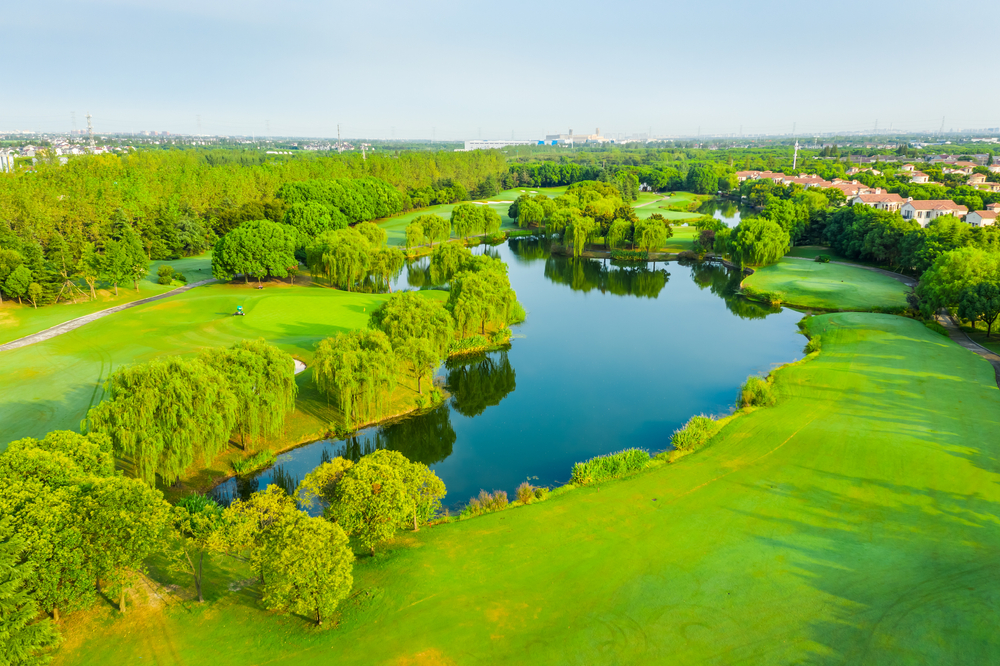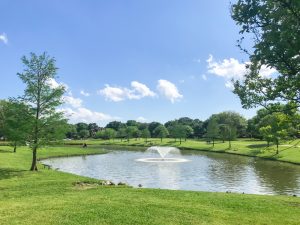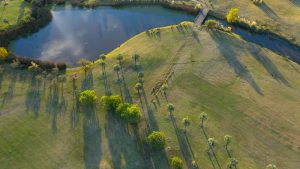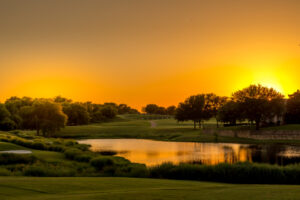Golf courses are renowned for their lush green landscapes and picturesque fairways. Yet, hidden amidst the beauty lies an essential element that often goes unnoticed—the ponds. These tranquil water bodies not only add to the aesthetic charm but also play a crucial role in maintaining the course’s overall functionality.
As experts in pond and lake management, Waterline understands the significance of these ponds and the challenges they can face. Let’s delve into the common pond issues on golf courses and discover Waterline’s expert solutions.
Common Pond Issues on Golf Courses
Algae Blooms
One frequent problem is the emergence of algae blooms. Algae, tiny green organisms that thrive in water, can quickly turn a peaceful pond into an unsightly green mess. These blooms are typically fueled by excessive nutrients stemming from nearby fertilizers and runoff, creating imbalances within the pond’s ecosystem.
Invasive Aquatic Plants
Another challenge is the invasion of non-native aquatic plants. These foreign plants disrupt the pond’s delicate balance by outcompeting native species, resulting in harm to water quality and the natural habitat. This invasion can undermine the overall health of the pond ecosystem.
Poor Water Circulation
While stagnant water may appear harmless, it can lead to a range of issues. Inadequate water circulation can cause problems like oxygen depletion, stratification, and even unpleasant odors. Ensuring proper water circulation is essential for maintaining the pond’s health and appearance.
Waterline’s Approach
At Waterline, we believe that addressing pond issues requires a holistic approach. We start by identifying the root causes of these problems before devising effective solutions. Our strategy integrates both mechanical and chemical methods, ensuring a balanced and comprehensive approach.
Solutions for Algae Blooms
Mechanical: To combat algae blooms, we often recommend installing aeration systems. These systems increase oxygen levels in the water, disrupting the conditions that favor excessive algae growth.
Chemical: In cases where algae blooms are persistent, targeted algaecide treatments can help regain control. These treatments are carefully chosen to ensure minimal impact on the pond’s ecosystem.
Solutions for Invasive Aquatic Plants
Mechanical: For the invasion of non-native aquatic plants, Waterline employs mechanical removal methods such as dredging. This helps restore the pond’s natural balance and allows native species to thrive once again.
Chemical: In situations where mechanical methods aren’t sufficient, we employ herbicides tailored to the specific invasive plants. These treatments are designed to minimize harm to native species while effectively managing the invaders.
Solutions for Poor Water Circulation
Mechanical: To combat stagnant water and encourage healthy circulation, Waterline recommends the installation of water circulation systems. These systems promote movement, preventing stratification and enhancing water quality.
Aeration for Circulation: It’s worth noting that aeration systems not only tackle algae blooms but also contribute to water circulation. By introducing oxygen at various depths, aeration systems create currents that keep the water moving.
Preventive Measures
Effective pond management is crucial in preventing these issues from occurring. One important aspect of proactive pond management is regular monitoring. This means consistently checking the quality of the water and conducting assessments to spot potential problems before they become more serious.
Another key strategy is the creation of buffer zones around the pond. These buffer zones are areas with vegetation that help soak up extra nutrients and stop them from running into the pond. This not only maintains the pond’s health but also safeguards against issues like nutrient imbalances.
Additionally, planting native vegetation along the pond’s shoreline can be highly beneficial. Native plants have the power to stabilize the banks, reducing erosion, and they also contribute to improving water quality. By adopting these practices, you can ensure your pond remains healthy and free from many common challenges.
Trust Waterline
Golf course ponds are not just serene ornaments; they are integral to the course’s health and appearance. To address the common challenges of algae blooms, invasive plants, and poor water circulation, trust Waterline’s expertise. Our holistic approach, combining mechanical and chemical methods, ensures that these issues are not only resolved but prevented.
Reach out to Waterline today and let us help you maintain the beauty and functionality of your golf course ponds.



